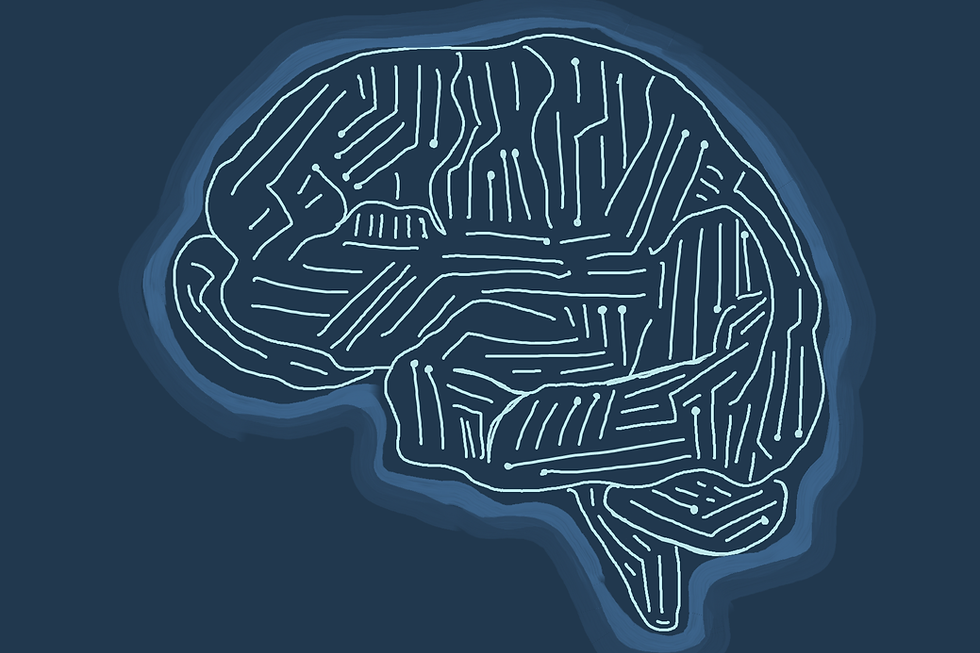The Fine Line of Addiction
- The Natural Philosopher
- Apr 4, 2021
- 3 min read

By Katharine Santiago
The use of drugs and alcohol in college is seen as a normal part of the experience, but a lot of times the line between what is “normal” and what is unhealthy, or addictive behavior, is blurry. Many college kids tend to consume drugs and alcohol in excess on the weekends, but are able to go throughout the week without either, and can probably stop all together if they wanted to, but this isn’t true for everyone, because of genetics and environmental factors that differ between individuals (Agrawal, et al., 2012). So, when does this behavior become an addiction, how do we prevent it, and once someone develops an addiction, how do we help them?
To explain why a once casual drug user starts to use a drug uncontrollably, we have to look into the brain. While addictive drugs act on the brain in different ways, they all stimulate the reward pathway in the brain. These drugs act on dopamine receptors at the start of the reward pathway, in the ventral tegmental area (VTA). The VTA then projects into other regions of the brain that are involved in memory, anxiety and fear responses, and homeostatic regulation. It is these biological effects that make a user want to continue to take a drug (Nestler, 2005). On top of this, drug use can alter the reward pathway to a point where you may even feel the need to take a drug, at which point it is no longer about having fun or enjoying the high, but rather about eliminating unpleasant effects of withdrawal. So while a lot of people may take drugs for fun, they may not realize when they reach the point of addiction. A study from 2017 described the changes that can occur in the reward pathway for those suffering from addiction. Individuals with addictions showed a decreased brain response when anticipating a reward. When the reward was actually delivered, those with addiction showed increased activity in the ventral striatum compared to those without addiction (Luijten, et al., 2017).
This begs the question as to how we actually describe an addiction. The most common method of diagnosing psychiatric disorders in the US involves using the DSM-5, a diagnostic manual. As part of the criteria for many disorders, the problem must cause you distress and impair your ability to function “normally”. So if you tend to drink a lot on the weekends but you can still fully function, does this mean you are an addict that needs diagnosis and treatment? There are other diagnostic manuals that are used in the US and around the world that define addiction differently. For example, in Europe the ICD is commonly used, and it diagnoses addiction based on the presence of three or more symptoms such as, tolerance, withdrawal, and cravings, similar to the DSM-5 (Grant, et al., 2014).
It is important to be aware of your behaviors and how they impact your life. There is a blurry line between normal alcohol and drug use and addiction for a lot of college students, and sometimes knowing the difference is very hard. It is possible that some people consume a lot of intoxicating substances in college and stop once they graduate and start working, it happens all the time. But for some people, they don’t know how to quit, and it can become a lifelong battle for them. In a culture that normalizes excessive intoxication, it is easy to fall into bad habits that are much harder to break. This is something we like to ignore in college, and it leaves a lot of people left struggling with an issue that they don't necessarily understand. It isn’t something you think about until you are forced to think about it. There is nothing wrong with talking to your friends if you are worried about them, because sometimes that’s all they need to hear.
Citations:
Agrawal, A, Verweij, K.J.H, Gillespie, N.A, Heath, A.C, Lessov-Schlaggar, C.N, Madden, P.A.F, . . . Lynskey, M.T. (2012). The genetics of addiction—a translational perspective. Translational Psychiatry, 2(7), E140.
Nestler, Eric J. (2005). Is there a common molecular pathway for addiction? Nature Neuroscience, 8(11), 1445-1449.
Luijten, Maartje, Schellekens, Arnt F, Kühn, Simone, Machielse, Marise W. J, & Sescousse, Guillaume. (2017). Disruption of Reward Processing in Addiction : An Image-Based Meta-analysis of Functional Magnetic Resonance Imaging Studies. JAMA Psychiatry (Chicago, Ill.), 74(4), 387-398.
American Psychiatric Association. (2013).Substance-Related and Addictive Disorders. In Diagnostic and statistical manual of mental disorders (5th ed.) https://doi-org.ezproxy.uvm.edu/10.1176/appi.books.9780890425596.dsm16
Grant, J.E, Atmaca, M, Fineberg, N.A, Fontenelle, L.F, Matsunaga, H, Reddy, Y.C.J, . . . Stein, D.J. (2014). Impulse control disorders and "behavioural addictions" in the ICD-11. World Psychiatry, 13(2), 125-127.


Comments